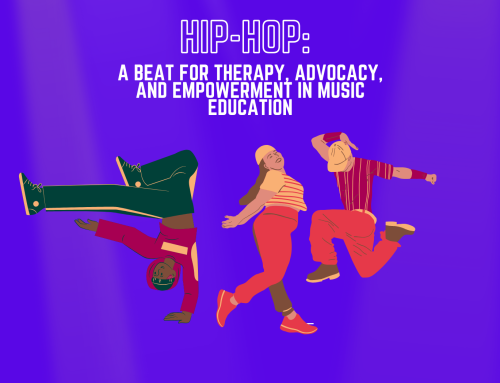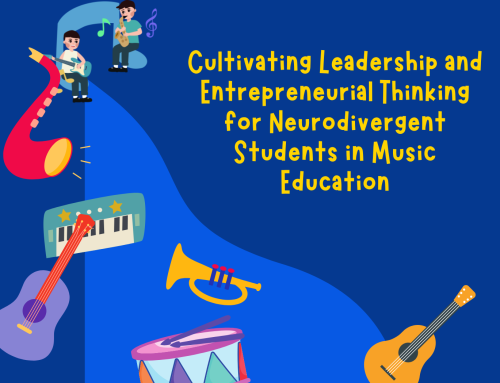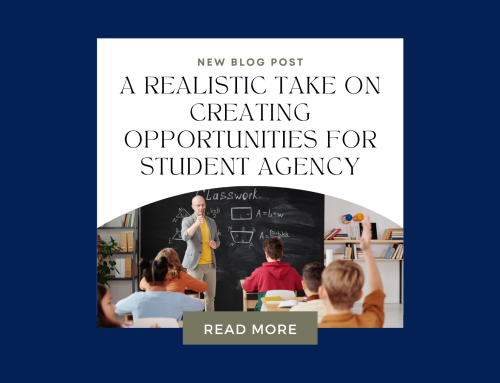For the past few years, the field of music education has talked about an increased need for diversity and equity in classrooms. However, as I’ve listened to these calls for change, I frequently see that for many people, diversity and inclusion encompasses only race, ethnicity, gender, sexuality, orientation, and socioeconomic status. And while these are all aspects of music education that certainly need to change, I hold firm to the belief that we cannot have truly diverse or inclusive classrooms until we also include people with disabilities.
When attending music education professional development, teachers often want to learn more about including students with disabilities but need to learn how to balance a budget without getting audited by the IRS, actually play the bassoon, or choose high quality repertoire. We, as teachers, are frequently left to choose what sessions will best help out programs immediately and leave the other sessions for later. In turn, sessions related to students with disabilities can be left poorly attended and eventually moved into smaller rooms or reduced in frequency.
It is for this reason that I feel teachers should have access to high quality information and research that can help bridge the gap between what they know and what they don’t know about teaching students with disabilities. This article is one of many that helps show teachers that inclusion makes an ensemble or classroom more complete.
Table of Contents
Accessible Music Opportunities
Teachers often seek help for better ways to include students with disabilities, but as Dr. Linda Thornton and Dr. Mara Culp found, much of that research was absent of student voices. This research study sought to understand both students with physical differences and their teacher-explained participation in an instrumental music classroom.
For this qualitative study, Drs. Thornton and Culp interviewed students, their parents (to whatever degree they desired), and the teacher of an elementary music program. Rob, the music teacher, initially thought that students could either participate in the program as it is or couldn’t participate at all. However, over his 30 years of teaching, he came to understand that differentiated instruction and providing a musical education to all students regardless of ability actually enhanced his program.
What was Found?
Over the course of the study, Drs. Thornton and Culp found five themes: (1) previous experiences and prior knowledge, (2) recognizing strengths and challenges, (3) perseverance toward desires in the face of uncertainty, (4) help and support from others, and (5) materials.
The students involved in Rob’s program were able to recognize their strengths and be proud of their accomplishments in the music classroom. All the students in the study faced challenges at some point, but with Rob’s help and creativity, they were able to play whatever instrument they chose, even if success wouldn’t be easy to achieve. Problem-solving, reaching out to students and parents, and researching assistive devices helped the students to be successful. This hard work also made Rob more prepared for future challenges presented to him in his classroom.
For Rob, his change in mindset about inclusion happened through professional development during graduate courses, in-service professional development sessions, staying informed about existing research, and his experience in the classroom over time. His change in philosophy over the course of his career helped him to recognize that there was value in including all students. And this inclusive philosophy meant that it was up to him to figure out what supports each student needed to participate to the best of their ability.
So what? Why Should You Care?
This article, found in Update: Applications of Research in Music Education, offers many suggestions for how teachers can use the findings from this study. The main points Drs. Thornton and Culp make are that learning to include students with physical differences was all about building knowledge about disabilities, keeping learning goals student-centered, collaborating with students and families about what success looks like, and learning about and finding assistive devices to help students be successful in classrooms.
And while this research focused on students with physical disabilities, the suggestions and findings aren’t just limited to students with physical disabilities. Disabilities can be visible or invisible. Students may or may not be able to advocate for themselves. Our students with disabilities shouldn’t be prohibited from participating just because they don’t fit into the mold of what we believe our programs should look like.
Moving Forward
Our students with disabilities don’t just experience difficulties related to their disabilities in schools. Our society often is ignorant of the struggles that these students grow up experiencing. This lack of awareness leads me to think about how present ableism is in our classrooms and society.
Two examples immediately come to my mind when thinking ableism in news: Sia’s new movie Music and the Super Bowl commercial featuring the Paralympic swimmer Jessica Long.
Sia’s film Music left out those from the autism community and yet is still receiving praise in the form of Golden Globe nominations. In case you’re unfamiliar, Sia initially chose to cast the role of Music with an autistic actor who decided to drop out of the project. Despite several autistic individuals expressing interest from the casting call on Twitter, Sia recast the role with Maddie Ziegler, who does not have a disability. This is a common issue in Hollywood, where actors frequently take roles of characters with disabilities despite there being capable actors with disabilities to represent themselves and their disabilities on screen. Sia got into some heated arguments on Twitter for defending her casting decisions and her misinformed research, which you can read about in this great op-ed article. This is overt ableism.
At first viewing, the Super Bowl commercial featuring Jessica Long probably seemed quite uplifting and inspirational. It was a commercial featuring a rock star Paralympic swimmer. In the commercial, she was held up as a person who found a way to succeed even with a limb difference. The commercial wasn’t about how great she is, how hard she worked, or that she’s won 29 (!!) gold medals. This commercial lifted her up to be a story following the trope of overcoming her disability to be successful. This is covert ableism.
And while ableism is sometimes hard to see, it shows up all the time in our music classrooms. I’ve heard stories of auditoriums not having a wheelchair ramp (overt ableism). I’ve also seen students prevented from participating in honor or auditioned ensembles due to not being allowed the additional processing time needed for sight-reading success (covert ableism). And I honestly feel it is our job as music educators to make our classrooms a place where social justice means fighting for all of our students, regardless of their race, ethnicity, gender, sexuality, orientation, socioeconomic status, or ability. Just like Rob, we need to change our mindset and accept that everyone has something to offer and enrich our classrooms.
Let’s continue the work of giving everyone a seat at the table, and then fight to also make sure that everyone at that table can be heard in their own way.
Do you have research to contribute to this column? Submit with this link so that I can share what you’ve created in a future column.




Leave A Comment